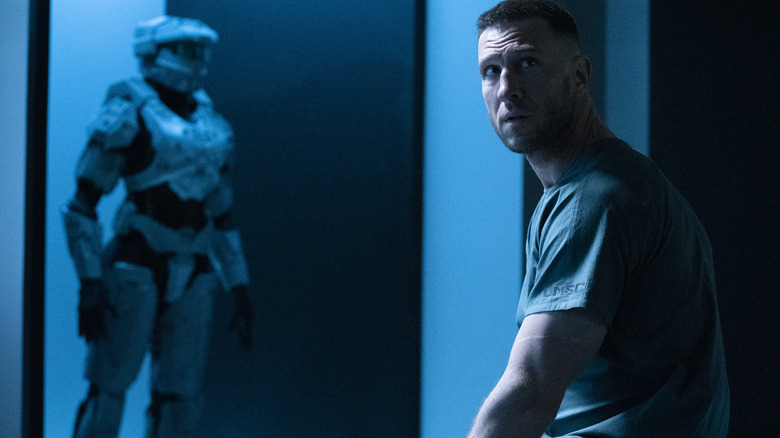
Every fan has their own specific reasons for what drew them to "Halo" in the first place. For many, the clean and simple gameplay of "Combat Evolved" held plenty of appeal all on its own, rewarding intuitive gamers who swapped guns and employed various strategies depending on the needs of specific situations and level designs. For others, the incredible amount of world-building and lore packed into the story hooked them immediately and would go on to prove foundational — not only to the original game and its many sequels and spin-offs, but to an entire expanded universe of "Halo" tie-in novels, comics, encyclopedias, toys, and more.
For the more romantic and narrative-minded among us, however, one key character dynamic has served as one of the franchise's main selling points throughout the last 2 decades. The unlikely bond between the artificial intelligence Cortana and the super-soldier Master Chief (and, by extension, the gamer/reader/viewer themselves) has slowly but steadily evolved over the course of their adventures into something that defies all labels. Though originally designed as little more than a helpful piece of hardware to guide gamers through labyrinthine locations and provide handy exposition dumps when needed, subsequent material increasingly placed Cortana in a more central role, to the point of providing some of the series' most affecting moments ("Don't make a girl a promise ... if you know you can't keep it") and even forming the emotional backbone of the somewhat divisive "Halo 4."
That brings us to this latest episode of the Paramount+ "Halo" series titled, fittingly, "Emergence." After a first few weeks of dancing around this inevitable introduction, episode 3 finally sees fit to bring the Master Chief (Pablo Schreiber) and Cortana (Jen Taylor, reprising her voice role from the games) together again, although in vastly different circumstances than fans ever could've anticipated.
Overall, this latest hour still feels like yet another mixed bag, with some storylines and creative choices continuing to work better than others. It also feels like the show at its absolute weirdest ... but I'm not entirely sure that's a criticism, mind you. In any case, the shot in the arm provided by this significant plot development should at least provide some much-needed momentum going forward, as we've now put the first third of this inaugural season behind us. Let's break it all down below.
Arc Of The Covenant
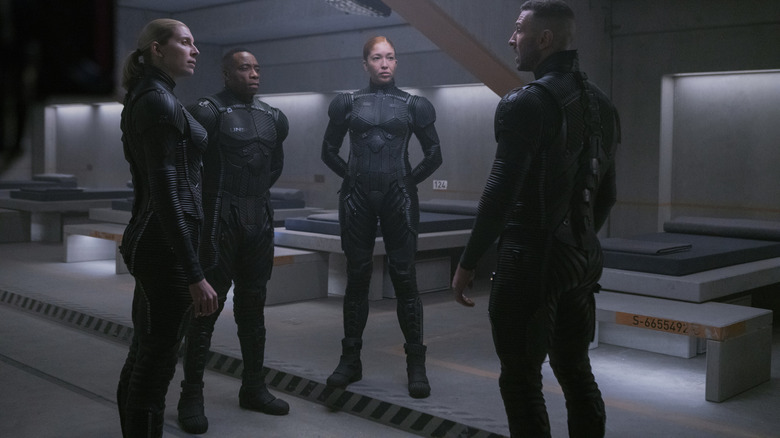
For an episode seemingly all about John-117 and Cortana, it's an interesting decision on the part of showrunners/writers Kyle Killen and Steven Kane and director Roel Reiné ("Black Sails," "Inhumans") to start things off with an unrelated flashback to roughly 2 decades in the past.
It isn't immediately clear what connection the brutal conditions of planet Oban, an industrial waste salvage colony, shares with the ongoing plot ... until the Covenant rudely arrives. The episode is initially content to play things close to the vest, leaving us to focus on two small children hiding from the oppressive Robocop-esque guards who are forcing the planet's populace into grueling working conditions straight out of "Alien 3." We find a young boy named Det (Billy Marlow) reading aloud to his crush from a (fictional) novel titled "The Dawn of Angels" — the same book, viewers may recognize, that was in the possession of the human captive/ally of the Covenant, "the Blessed One" (Charlie Murphy), for the purpose of understanding humanity. Yes, we're watching the young version of this enigmatic character (played by Zazie Hayhurst) and discovering how the Covenant tracked her while seemingly searching for another relic.
The purpose of this prologue, it seems, is to set up one of the more important storylines for the season in the weeks ahead: Makee's mission to infiltrate the humans of the UNSC (a rare glimpse of action and body horror later on as Makee and wormlike Covenant aliens slice through a UNSC ship with terrifying ease), track down the "keystone" artifact (starting in Madrigal), and deliver the Demon's head for the Covenant Prophets. This has remained one of the more frustratingly vague subplots and characters in "Halo" to this point, admittedly, but things finally seem to be kicking into gear.
In fact, this sense of forward motion extends beyond the Covenant side of the story and to the UNSC as well. John continues on his mini-quest of introspection, questioning what remains of his humanity and the mysterious effect the Madrigal object continues to have on him. Elsewhere, however, even someone like Miranda Keyes (Olive Gray) is given an actual plot function, as Admiral Parangosky (Shabana Azmi) tasks the young scientist with leading her own team to analyze the relic, intentionally setting her at odds with her own estranged mother and rendering the upstart Halsey slightly less important to the Admiral in the process. Though all of these characters remain separated in their own oddly confined subplots, it's easy to see how their roles continue to round into shape. The Chief and Makee, in particular, certainly seem destined for a collision course sometime down the line, as well.
But first, let's get to the actual "emergence" of the episode.
I Think This Is The Beginning Of A Beautiful Friendship...
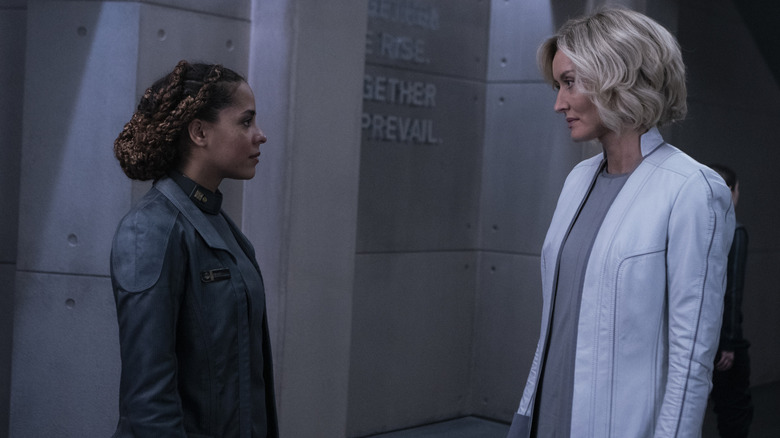
With the table-setting out of the way, the weirdness truly begins. Following up on last week's cliffhanger ending with Dr. Halsey's (Natascha McElhone) clone awakening, the latest episode throws us right into the deep end of the uncanny valley. Halsey's early conversation with the sentient and self-aware clone is bizarre, awkward, and off-putting enough to make me want to give this heavily modified Cortana storyline a chance. A brilliant (if wildly unethical) scientist bickering with her fully-formed (and very illegal) flash clone who knows exactly why she's been created — organ harvesting — may not be precisely what anyone expected to see from a "Halo" series, but the results are fascinating nonetheless.
Here, we receive even more evidence of Halsey's coldhearted and ruthless streak: "You are merely a product of [my] samples," she informs the living, breathing being across from her, currently performing advanced intelligence tests. More importantly, this gives us another brief window into the dark beginnings of the Spartan program itself. The Halsey clone bluntly asks about "the children," clearly referring to the Spartan candidates that Dr. Halsey and the UNSC indoctrinated into the super-soldier program at a young age. Upon being informed that only 35 survived the augmentation process, horrifically implying that more than half were killed, the clone immediately realizes that she'll be playing a significant role in the implementation of Cortana — namely, providing the brain for the artificial intelligence. If there were any doubts about the show's viewpoint on the UNSC's moral turpitude, the clone's gruesome death scene that follows not-so-subtly codes Halsey and her creepy assistant Adun (Ryan McParland) as Nazi-era scientists, doing anything in the name of "progress" (Halsey's own words) to justify their means.
In all honesty, kudos to the series creators for taking the uncomfortable subtext of the franchise — the fascistic undertones inherent in the Spartans' origins and continued service — and forcing audiences to confront it face-to-face (literally).
Cortana's "birth" neatly dovetails with the Chief's personal journey into his past as he's cleared to return to duty ... but only on the condition that he integrates with Cortana. This doesn't get off to a smooth start, but at least instances like Cortana unexpectedly crashing the Chief's meeting with the other Spartans provide some of the show's only real attempts at humor thus far. Even better, the grating dynamic between the formal, straight-laced Chief and the energetic naïveté of Cortana feels fun and full of potential conflict. It's a neat beginning to their established relationship and almost feels tempting enough to make us conveniently look past her disturbing origins stemming from the murdered Halsey clone — almost.
In another example of this episode's eccentricities, we're treated to an extended sequence where John cuts the hormone-suppressing pellet from his lower back (providing some equal-opportunity nudity after Charlie Murphy's undressing scene last week, for those who keep track of such things!) and goes out into Reach to experience normal human interactions without any artificial filters. Again, fans may not have expected a "Halo" series to feature the Spartan enjoying a classical music concert, but there's something oddly touching about this whole detour.
The ending promises plenty more action and adventure ahead as John insists on visiting his homeworld, which may or may not harbor a second artifact. But for all the show's stumbles so far, episode 3 of "Halo" shows how strangely entertaining the series can be when it embraces the weird.
(Re)claim To Fame
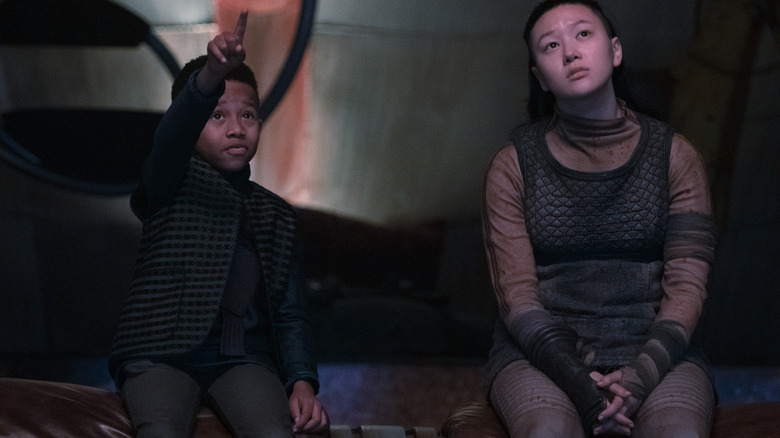
- Halo Watch: Nope, I'm not retiring this category anytime soon. There still isn't a Halo in sight, but there are at least some developments here. The keystone is, well, the key. We now know Makee is dead-set on recovering it from the UNSC's clutches, though there's the added wrinkle of a potential second artifact that will do something or other when combined with the first. This is all rather hazy and I'm not sure if that's intentionally so, but I'm going to need this storyline to hurry up already.
- Globetrotting: For those wondering: yes, "Oban" and all the other planets mentioned throughout this episode (especially in the scene where Cortana assists John's search in finding his home planet, Eridanus II) are names taken straight out of franchise lore. We'd be here all day if I listed them all out individually, but Oban in particular has "Halo 5: Guardians" connections as the location of Forerunner-caused destruction. It's a fun bone to throw at fans if nothing else.
- Mommy Issues: I only touched on this point above, but I for one am looking forward to how Miranda Keyes' new directives should put her and Dr. Halsey in direct conflict ... or, at least, I was until the episode ends with Halsey jetting off with the Chief. Despite one of the images (also seen above) released for this episode, I don't actually think Miranda and Halsey have ever shared a single conversation just yet. Let's hope this development gives their "relationship" some overdue juice — it's certainly a better use of Miranda than having her play diplomat with Kwan a few weeks ago in a transparent attempt to give the character something to do.
- Checkmate: Did you catch Cortana's first words after being activated? "When the game is over, the king and the pawn go back into the same box." Far from a non sequitur, that phrase is actually a callback to the video game canon, where Halsey's mother repeated this phrase to Halsey herself after a game of chess (as revealed in Halsey's journal during "Halo: Reach"). Fun fact: a progressively rampant Cortana actually mentions this anecdote in "Halo 4," when her memories and those of Halsey's seem to be confused.
- Divergent Differences: Here's a neat little difference from previously established "Halo" lore. In Eric Nylund's "The Fall of Reach," Halsey describes the Chief to Cortana as, "...neither the smartest nor the fastest nor the strongest of the Spartans. But he is the bravest -- and quite possibly the luckiest. And in my opinion, he is the best." Here, Cortana instantly sizes up an unconscious John: "Above the rest in strength, stamina, and good instincts." This isn't a major issue either way, but I do think I prefer the book's description of the Master Chief more than the show's less nuanced summation.
- Lucky Coin? Speaking of luck, we briefly see young John holding a coin during one of his relic-influenced memories. This also hearkens back to "The Fall of Reach," where a younger Halsey in full recruitment mode actually visits John on Eridanus II and creepily scopes him out to test his fitness for the Spartan program. They play an innocent enough game of heads or tails, which John wins. Unbeknownst to the poor kid, this was actually a final test for luck. Halsey needed to cull the candidate pool somehow, so only those who "win" that coin toss are subsequently kidnapped and forced into the training.
- Hunter Killers: By the way, those wormlike aliens who tear up that UNSC ship at Makee's behest? Gamers likely already put the pieces together and realized that this may be our first look at the Covenant race of Hunters. Also known as "Lekgolo," the fearsome creatures are made up of colonies of extraterrestrial worms and serve as the obligatory boss battles throughout the "Halo" games. Of course, they're usually encased in nigh-impenetrable armor, so here's hoping we get to see them in all their cannon-hefting glory on the battlefield at some point.
- Kwan and Soren: No, I didn't forget about two of our more major characters! It's just that their storyline is given so little emphasis in this episode. Kwan desperately wants to return to Madrigal to join up with the resistance there and fight the villainous Vinsher Grath (Burn Gorman). Soren, citing his promise to John last week to keep her safe, is understandably reticent. It only takes the temptation of either Kwan's "deuterium money" or the reward from the bounty on her head to convince him to change course entirely, which sort of rings false to me. I realize he and John aren't BFFs anymore, but this strikes me as more of a decision made out of plot convenience (the pair needs something to do rather than stay on the Rubble, after all) than anything else.
Read this next: The 15 Best Anthology TV Series Ranked
The post Halo Episode 3: A Classic Franchise Pairing Finally Emerges In The Oddest Episode Yet appeared first on /Film.
https://ift.tt/3K9m4Ch Jeremy Mathai
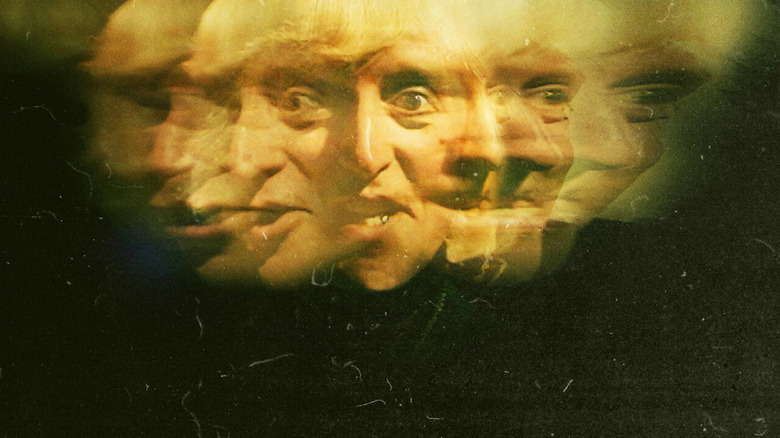
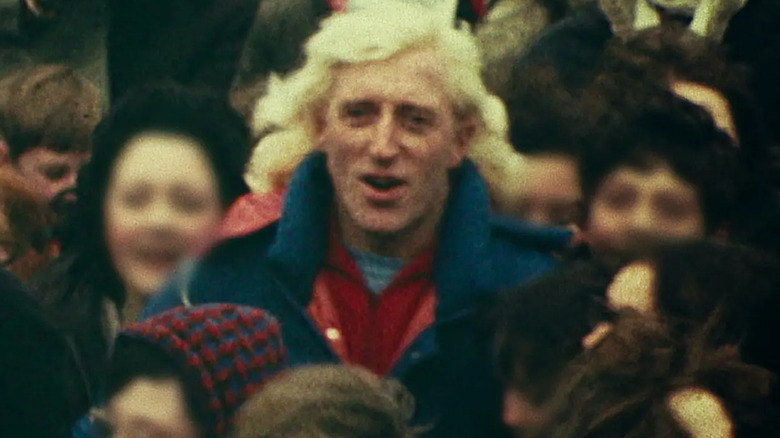


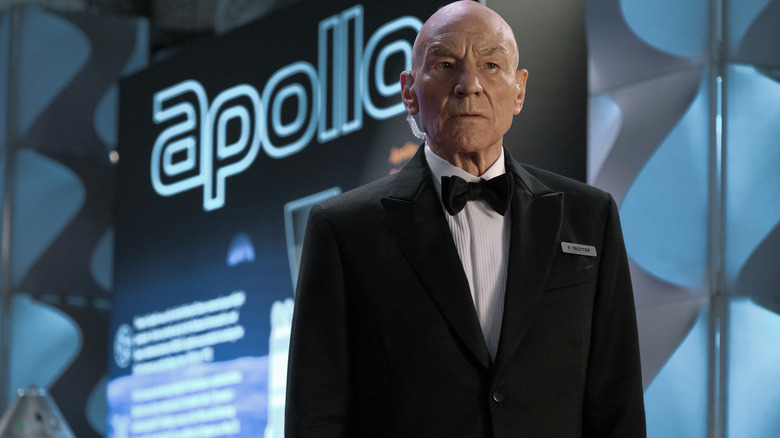
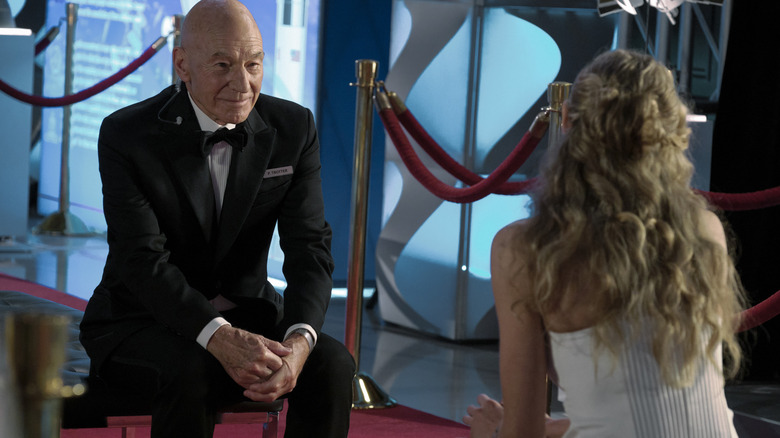
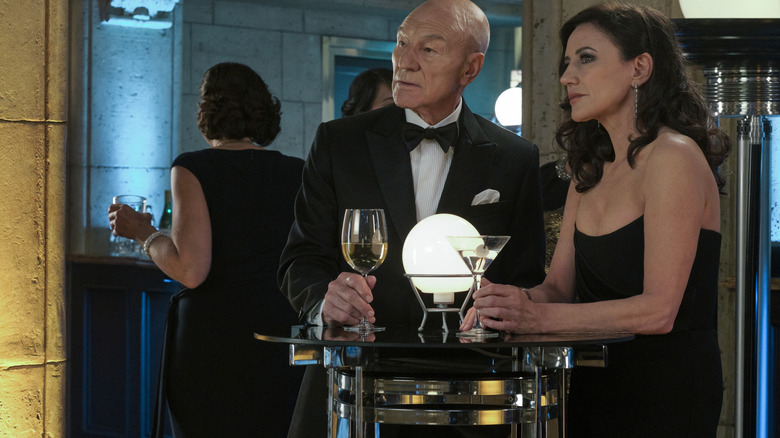
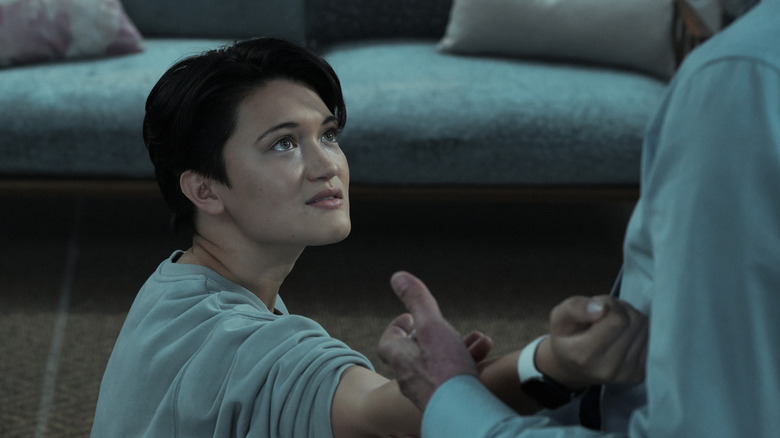




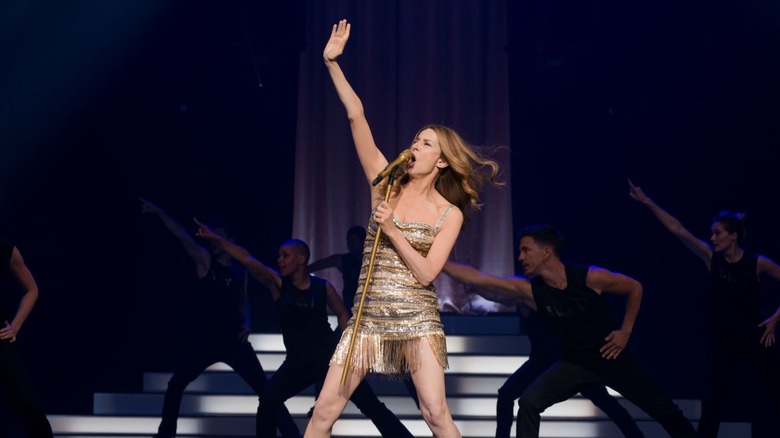
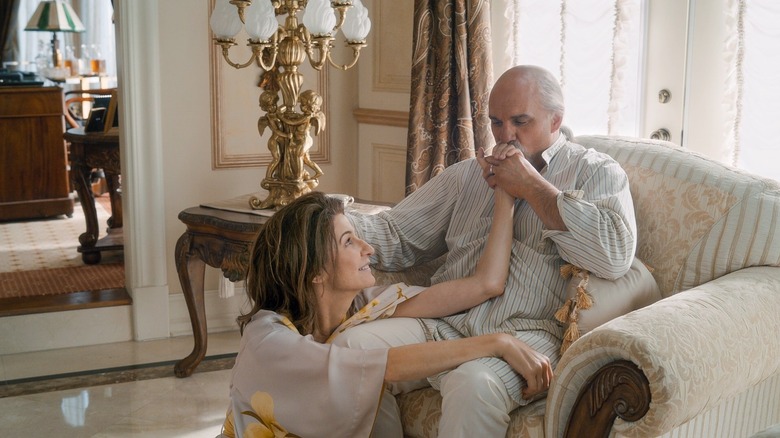
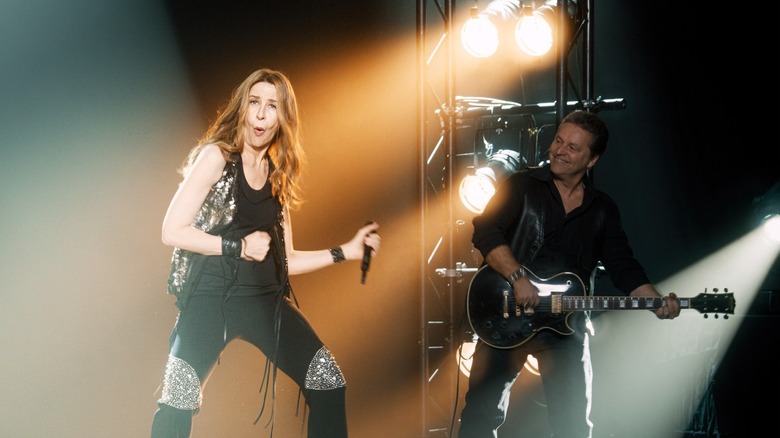

Follow Us